Martinique: The Island of Flowers is well worth a week’s stay!
Destination - CaribbeanMartinique is often chosen as a departure base for those who are cruising around the archipelago of the Windward Islands. Yet this island is full of anchorages, lagoons and some (nice) surprises. A week spent there will allow you to take it all in at your leisure.
Logbook
So, you’ve got a week with Martinique as your departure point? If you want to discover the Grenadines, you are cutting it a bit fine – you will need to cover a lot of nautical miles, and there will be less time ashore and in your anchorages. And that’s without the time needed for the numerous customs formalities that you will need to carry out. Yet, if you only want to short legs of sailing, why not make the most of Martinique, its rum and the excellent Creole gastronomy? And on top of this, it’s more than likely the place where you will pick up your charter boat: The bay of Le Marin is now the largest nautical complex in the Caribbean. The marina has 830 dock places, more than 100 moorings, and all the big charter companies have offices in this modern infrastructure. There are also local, specialist charter companies. A 4,500m² (50,000 sq ft) commercial center houses a range of service stores, such as chandleries, a launderette and a medical center. There are more than 70 nautical professionals located in Le Marin, meaning that every kind of catamaran is available, from the most comfortable to the sportiest, or even a trimaran. You also have the option of just chartering by the cabin. As far as sailing is concerned, the Island of Flowers has many magnificent bays and there are even some well-sheltered, picturesque and authentic areas on the Atlantic coast. Martinique is in fact one of the few islands of the Lesser Antilles to be protected by a coral reef. This windward coastline offers a quieter sailing zone. You just need to keep an eye on the weather.
Typical Itinerary
Martinique is 84 kilometers (52 miles) long from north to south and 39 kilometers (24 miles) at its widest. If the weather stays clement (as the windward side is exposed to the trade winds) you can easily sail around the island. Watch out for the sargassum, a marine alga which floats up from South America at various times of the year, blocking channels and making access difficult. If this happens to be the case, the Caribbean coast and the south of the island will provide plenty of tropical sailing.
Day 1
If you have a skipper, or if you land very early in the afternoon, you can head out of the harbor that evening and spend your first night in Saint Anne. It is only half an hour’s sail from Le Marin. It’s a pleasant town and allows you to top up on your supplies of fresh fish. In the evenings, the bars serve the famous spicy cod fish cakes.
Day 2
Baie des Anglais, staring into the trade winds. Picking up a mooring ball is mandatory. The bay is wild and protected by a coral reef that is officially listed as a nature reserve. The landscapes are fabulous and nature here is unspoiled, with beaches lined with coconut palms. The other option is the Petite Anse des Salines cove, with one of the best white sandy beaches.
Day 3
You arrive at the Ilets du François islands and the famous Baignoire de Josephine. In the Havre du Robert, anchor in the lee of Ilet Madame, inhabited by iguanas, and the Ilet Chancel where you can visit the ruins of the former brickworks. Then head for the Baie Aux Trésors, a new nature reserve at Caravelle Point before anchoring for the night in the Havre de la Trinité.
Day 4
A longer sail with the downwind trade winds takes you to the leeward side of the island in the Caribbean Sea. As a bonus there’s a great view of Mount Pelée. Your first stop is at Anse Turin, in front of Saint Pierre. It’s also possible to stop at Anse Ceron to the north west, at the foot of the mountain. There is an unspoiled beach of black volcanic sand. Saint Pierre is a fascinating town to visit. Its history was marred by two terrible volcanic eruptions in 1902 and 1929.
Day 5
Baie de Fort de France. Spend the morning discovering the capital’s covered market, before crossing the bay towards the Trois Ilets cape. It only takes around 10 minutes and there are several coves to discover. You can go horse-back riding at Anse à l’Ane, explore the mangrove at the back of the bay in a canoe or visit the maritime museum.
Day 6
Anse Noir and Anse Dufour: here you can observe the sea turtles. Then venture out to discover Anse d’Arlet, Anse du bourg, Grande Anse and Petite Anse. From Petite Anse, you can take a lovely walk in the tropical forest on the slopes of Morne Larcher. It takes an hour and a half to reach the summit and there’s a superb view over Diamond Rock and Saint Lucia in the distance.
Day 7
Return to Le Marin via Diamond Rock, which the British had commissioned as a warship. Scuba-diving or free-diving around here, to admire the flora and fauna, will surely bring you unforgettable memories. Last anchorage in the Anse Marigot before heading back to base.
Martinique: practical information
Getting There:
From the US you can fly with Norwegian, American Airlines and Air France. From Montreal, Air Canada, Norwegian and Air Transat all fly to Fort-de-France. Several companies fly to the island from Paris, notably Corsair, XL Airways, Air Caraïbes and Air France. From Frankfurt you can fly with Condor. Flights arriving from Europe touch down from 3pm and the transfer from Lamentin airport to Le Marin marina takes 45 minutes. If you take a taxi, it will cost you around € 65.
When to go:
The climate is tropical but is tempered by the trade winds. From mid-November through mid-April, the climate is fresher and drier, while from mid-June through mid-November it is hot, humid and rainy. Throughout the year, the air and water temperatures tend to stay between 24 and 30°C (75-86°F). The best season for sailing in the Windward Islands is from November to July, when the trade winds are lighter and there’s less chance of a tropical wave. The hurricane season runs from June 1st through November 30th, with the highest risk in September.
Practicalities
Documents: You will need a passport or a valid ID card if you are a citizen of a European Economic Area country or Switzerland. For other nationalities, a visa is required, or a form of ID issued by a European Union country.
Local Currency: The Euro. Just about every restaurant and supermarket accepts credit cards.
Language: French and Creole, a wonderful mixture of old French, English, African dialects and some Amerindian terms.
Health: There are no vaccinations required before entering.
Sailing Conditions:
The Caribbean Sea is an attractive sailing destination thanks to the trade winds. These are winds which blow fairly consistently from north east through south east. They blow between 20 and 30 knots from early January until the end of April, and then drop down during the summer months to 10/20 knots. You will ideally sail in the lee of the islands, as the sea is livelier on the windward sides and in between the islands. Try and arrive at your destination in the afternoon, as the seabeds are full of “bommies”, clumps of coral which it is advisable to navigate around during the day and with the sun high in the sky, making it easier to spot them. Watch out for lines drifting from floating fishtraps. The buoyage system in the Caribbean is in Zone B (US) and is therefore the inverse of Zone A (Europe).
Charter companies for this destination
Destinations offered by
View all the destinations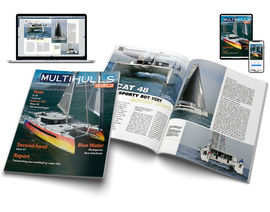
 Discover the 2025 winners!
Discover the 2025 winners! 
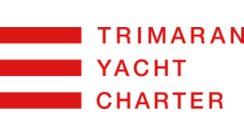
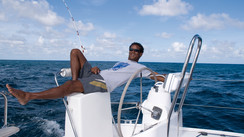
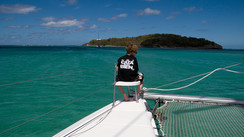
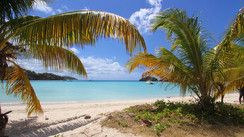
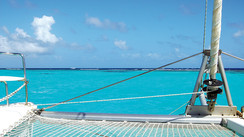
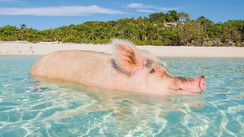
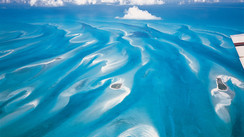







What readers think
Post a comment
No comments to show.